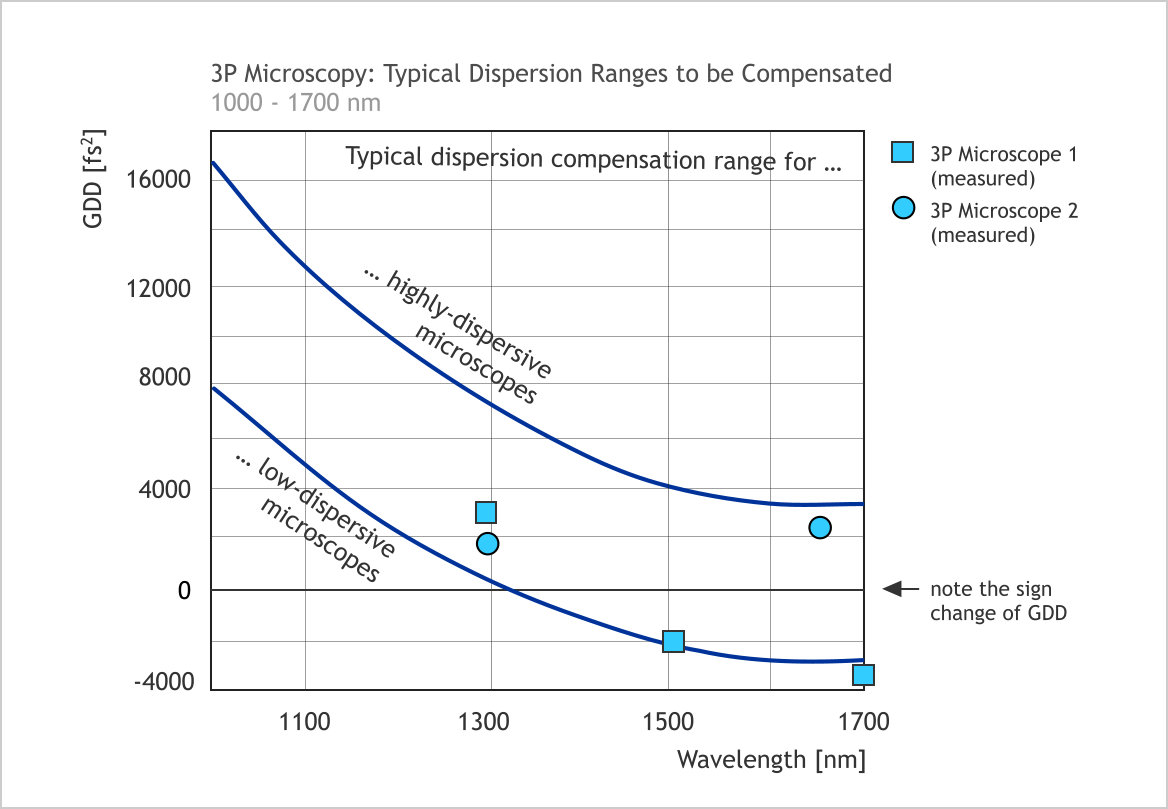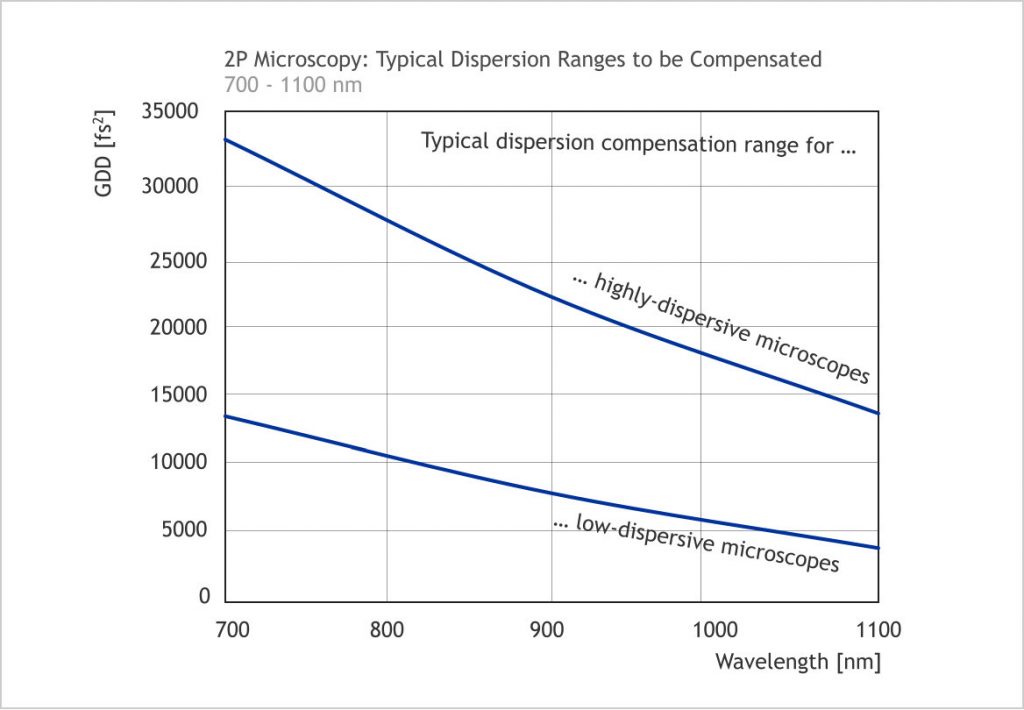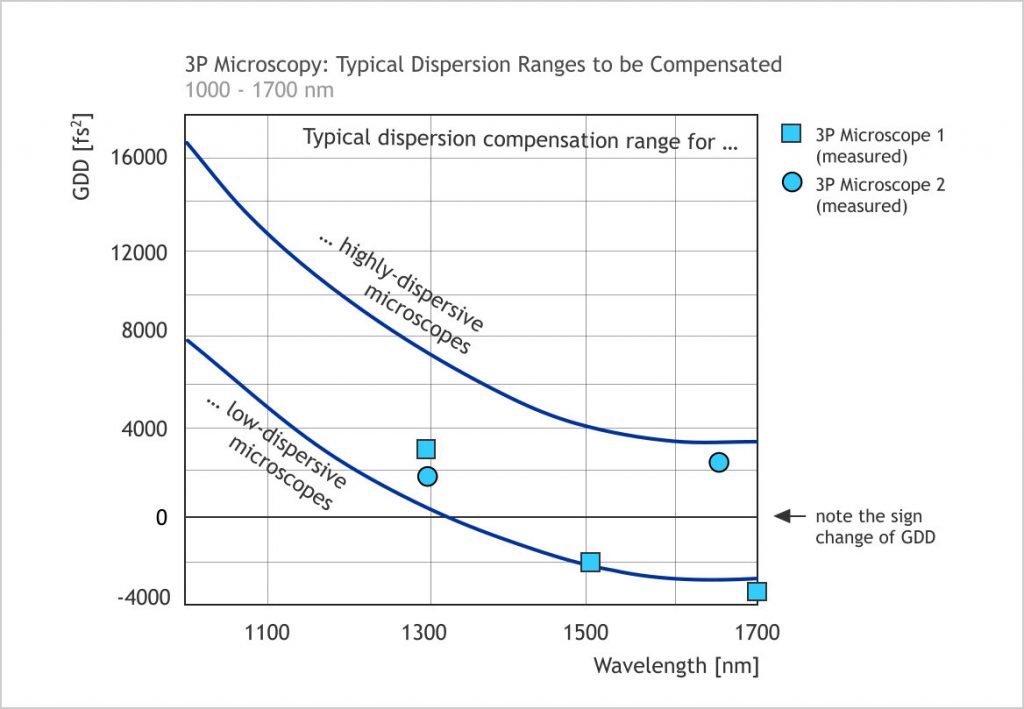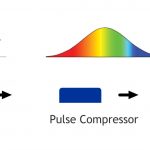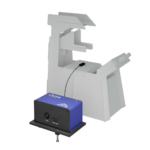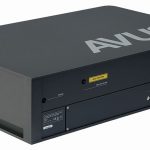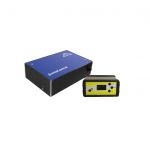Dispersion Compensation in Three-Photon Microscopy
Dispersion Compensation for 3P Microscopy
Three-photon microscopy (3P) with its typical excitation wavelengths from 1300 nm to 1700 nm is significantly dependent on the “correct” pulse width. This is because the pulse width determines how many photons are simultaneously available to initiate a multiphoton resonance. The task of 3P dispersion compensation is now to manage short pulses in such a way that they can reach the sample without being broadened when passing through a microscope.
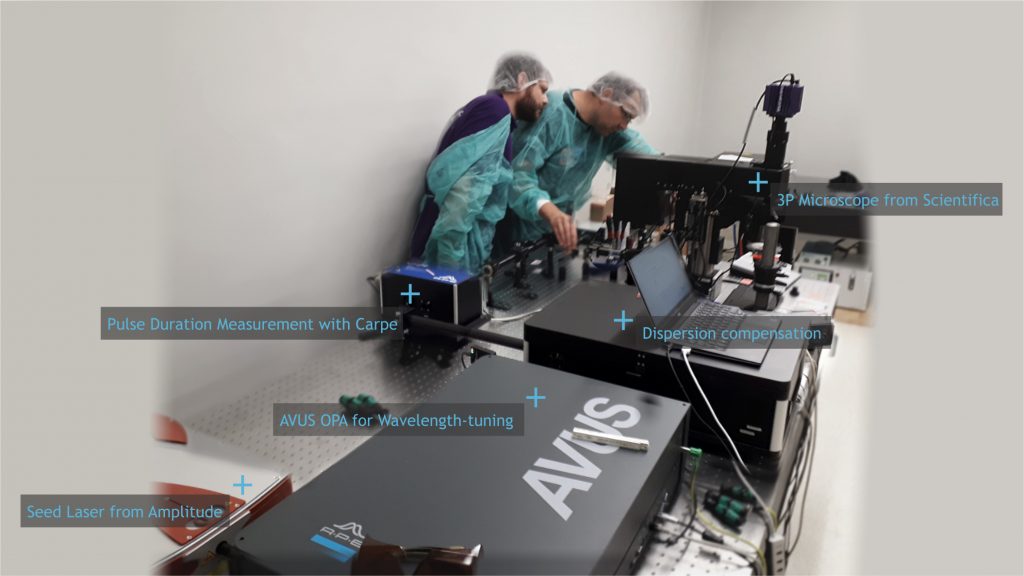
3-Photon Imaging Setup (during installation) incl. Dispersion Compensation, Microscopy Autocorrelator for Pulse Duration Measurement and OPA (AVUS) for Wavelength Tuning. In addition: 3P Microscope by Scientifica, Laser by Amplitude. Photo credit: Christian Wilms.
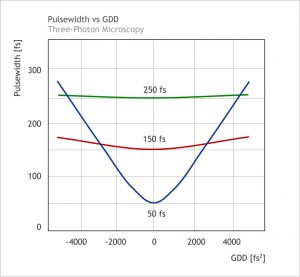
Fig. 1 Pulse width vs GDD: The dependence of pulse width and GDD in 3P microscopy.
In a nutshell, the shorter the pulses, the more power is available for the 3P generation. If there is not enough pulse energy concentrated within a certain (ultrashort) time interval, the efficiency of the 3P process is drastically reduced. An experience that scientists unfortunately have to make again and again if they want to undertake 3P experiments using modified 2P setups.
Maintaining short pulses in 3P-microscopy is challenging due to two reasons. First of all, the signal generation in 3P microscopy is proportional to the inverse square of the pulse width, while the signal generation in 2P microscopy is only proportional to the inverse (hence not square) pulse width. To put it simple, this means that very short pulses (i.e. ~ 40 – 70 fs) are necessary to generate sufficient signal. Small changes in the pulse width have a big effect on the signal.
Secondly, the short pulse durations generated by a laser must be maintained after passing through the microscope and on entering the sample. The pulse width at the sample is the result of a combination of the initial pulse width of the laser and the broadening of the pulse as it passes through the optical materials of the microscope. Additional pulse broadening occurs when passing through immersion fluids, water, and when entering the biological sample itself.
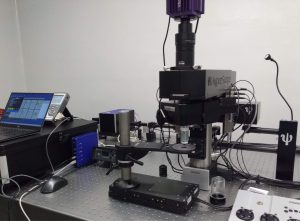
3P Microscope Setup including HyperScope (Scientifica), Dispersion Compensation (APE) and Pulse Duration Measurement (APE). Photo Credit: Christian Wilms.
The pulse broadening is caused by group velocity dispersion (GVD). GVD is a material parameter with the physical unit [fs²/mm] and describes the relationship between dispersion and length of the optical path. A complete microscope assembly including the sample consists of a mix of different materials with different GVDs.
To compensate for pulse broadening a sophisticated optical compensation layout is required. The task of the dispersion unit is to introduce a certain amount of GDD (Group Delay Dispersion) to compensate for the GVD of the microscope assembly. The GDD is a device parameter with the physical unit [fs²], and describes here the total dispersion of light that needs to be compensated when passing through the optical path.
A special characteristic with the wavelengths and optical materials used in 3P microscopy is, however, that even sign changes occur between positive and negative dispersion in microscopes (see fig. 3). Dispersion compensators used for 2P wavelengths, are therefore not capable of providing 3P-specific GVD compensation.
Fig 2: Shown is the required GDD for dispersion compensation of typical microscope setups in 2P-microscopy. The upper line marks the required GDD to compensate the dispersion of a microscope with highly-dispersive optics. The lower line marks the required GDD to compensate the dispersion of a microscope with low-dispersive optics.
Fig 3: Shown is the required GDD for dispersion compensation of typical microscope setups in 3P-microscopy. The upper line marks the required GDD to compensate the dispersion of a 3P microscope. The lower line marks the required GDD to compensate the dispersion of a 3P microscope that requires both positive and negative compensation.
For dispersion compensators in the 3P range, it is necessary to use compensation schemes that are different from 2P schemes.
Significantly smaller GDD fine-tuning must be provided with dispersion compensators in order to cope with the very short pulses in 3P-microscopy. Small changes in the GDD amount have a big influence on the pulse width (see fig. 1), and – as we learnt before – the maintenance of the correct ultrashort pulse width is crucial for the 3P-process.
Changes of the net GVD with tiny changes of the wavelength must be accurately corrected, and the sign change from positive to negative compensation – and vice versa – must be taken into account.
Last but not least, the effect of third-order dispersion (TOD, optical material parameter with the physical unit [fs3/mm]) needs to be considered for very short pulses (i.e. 50 fs and below), because TOD considerably limits the shortest pulse width.
As an ultrashort pulse specialist, APE has implemented and installed a range of 3P compensation solutions for different customer requirements. Do not hesitate to contact us if you have questions or if you are looking for a 3P dispersion compensation solution.

